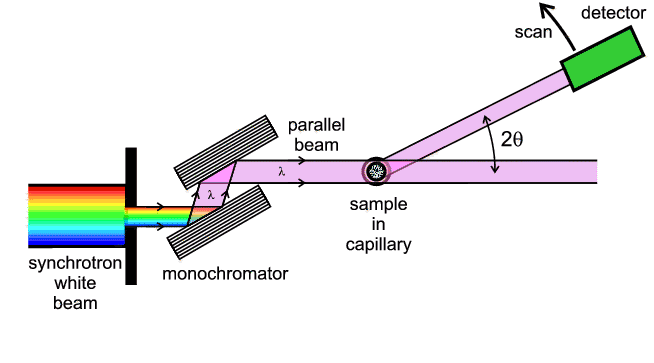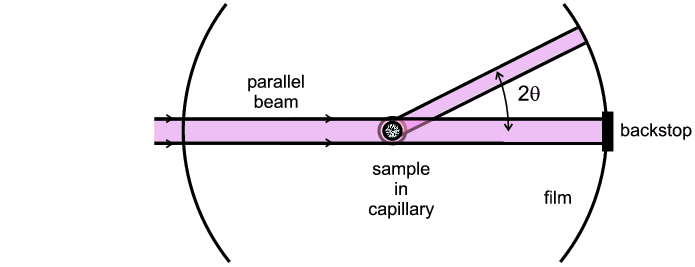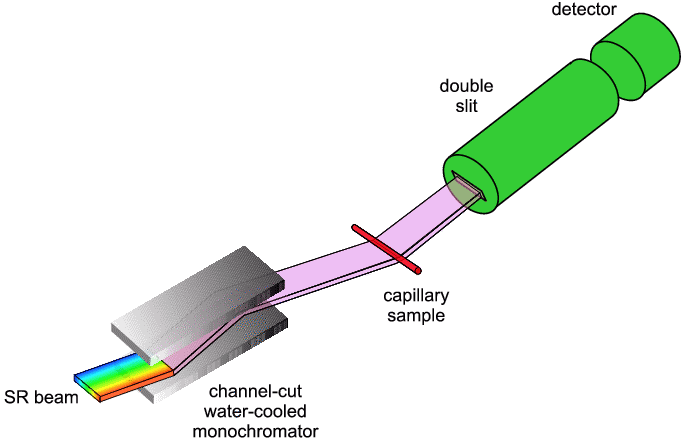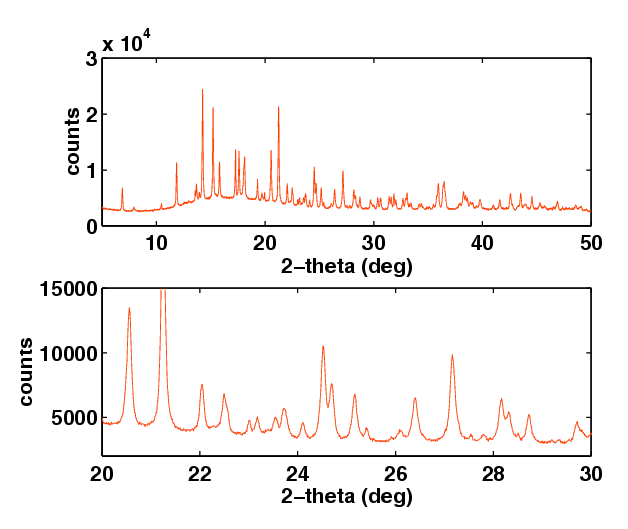 |
Mode (3): Debye-Scherrer |
 |
Mode (3): Debye-Scherrer |
Mode (3): Debye-Scherrer
The term Debye-Scherrer is named after the originators, Debye, Scherrer and Hull, and is one of the oldest known powder diffraction geometries, though originally it was used only with photographic film on a "powder diffraction camera". It uses a near-parallel incident beam of X-rays with sufficient cross-section to bathe the whole powder-sample. One of its virtues is its simplicity as illustrated by the following schematic of the Debye-Scherrer camera/diffractometer.
| Diffractometer |
 |
| Camera |
 |


There are no real disadvantages to this method, though it is not practical to use it for high pressure work. Also some purists do not like to have scattering in their pattern from the glass nor have the inconvenience of loading their samples into a narrow capillary.
|
© Copyright 1997-2006.
Birkbeck College, University of London.
|
Author(s):
Paul Barnes Simon Jacques Martin Vickers |